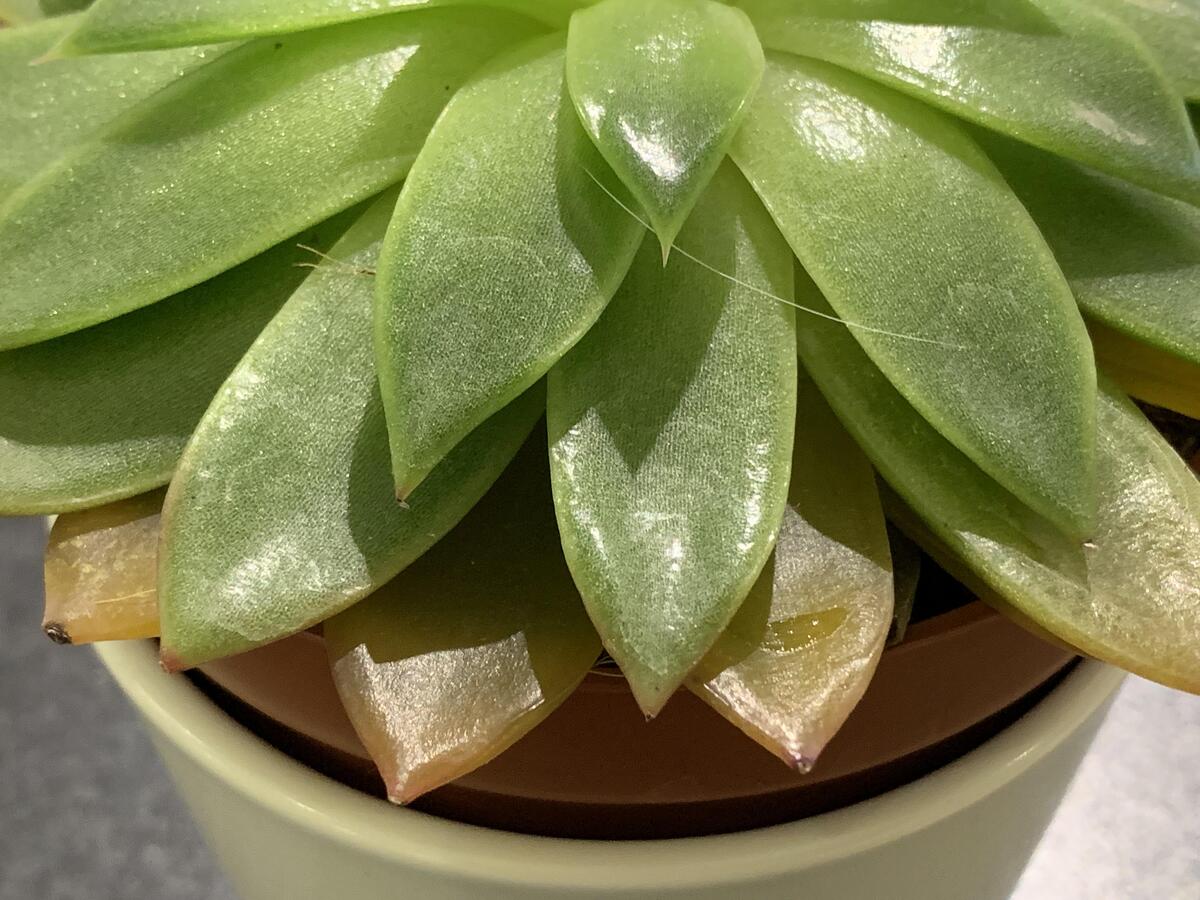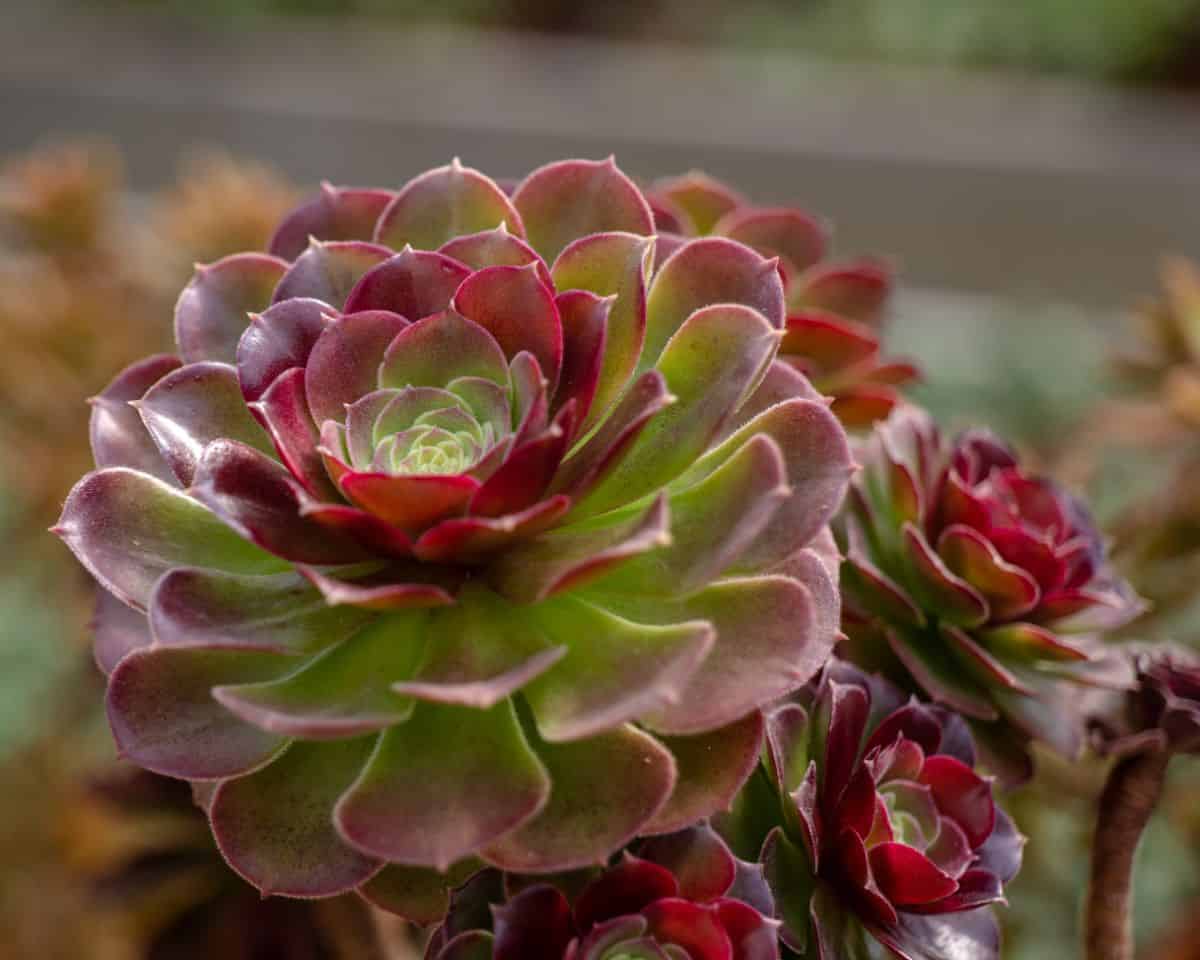Home>Types of Gardening>Edible Gardening>Why My Rosemary Plant Is Turning Brown


Edible Gardening
Why My Rosemary Plant Is Turning Brown
Modified: February 7, 2024
Learn how to prevent your rosemary plant from turning brown with our expert tips on edible gardening. Keep your plants healthy and thriving!
(Many of the links in this article redirect to a specific reviewed product. Your purchase of these products through affiliate links helps to generate commission for Chicagolandgardening.com, at no extra cost. Learn more)
Table of Contents
**
Introduction
**
Welcome to the world of edible gardening, where the joy of nurturing plants and reaping the rewards of homegrown herbs is a truly satisfying experience. Among the many treasures in an edible garden, rosemary stands out as a versatile and aromatic herb that adds flavor and fragrance to a variety of dishes. However, the journey of cultivating a thriving rosemary plant is not without its challenges. If you've noticed your once-vibrant rosemary plant turning brown, fret not, as we delve into the possible causes and effective solutions to revive and prevent this issue.
Rosemary (Rosmarinus officinalis) is a resilient evergreen herb known for its needle-like leaves and delightful fragrance. Whether used in culinary creations, herbal remedies, or ornamental landscaping, this herb holds a special place in the hearts of gardeners and cooks alike. Despite its hardy nature, rosemary plants can sometimes exhibit signs of distress, such as browning foliage, which can be disheartening for any gardener.
Understanding the underlying reasons behind a brown rosemary plant and learning how to address this issue is essential in nurturing a flourishing herb garden. Join us as we explore the intricacies of rosemary plant care, identify potential causes of brown foliage, and discover effective methods to revive and prevent the browning of this beloved herb. Let's embark on this enlightening journey to ensure that your rosemary plant thrives, exuding vitality and beauty in your garden and culinary endeavors.
**
Understanding Rosemary Plant Care
**
Before delving into the specific reasons behind a brown rosemary plant, it’s crucial to grasp the fundamentals of rosemary plant care. By understanding the optimal conditions and care requirements for this herb, you can create an environment that promotes its health and vigor.
Light: Rosemary thrives in abundant sunlight, requiring at least six to eight hours of direct sunlight daily. Placing the plant in a sunny location, such as a south-facing window or a spot in the garden with ample sunlight, is essential for its growth and vitality.
Soil and Drainage: Well-draining soil is paramount for rosemary plants, as they are susceptible to root rot in waterlogged conditions. A sandy, loamy soil mix with good drainage ensures that excess moisture does not accumulate around the roots, safeguarding the plant from potential issues.
Watering: While rosemary is drought-tolerant once established, it’s important to provide consistent moisture during its initial growth phase. However, overwatering can lead to root damage and subsequent browning of the foliage. Striking a balance by allowing the soil to partially dry out between waterings is key to maintaining the plant’s health.
Pruning: Regular pruning not only helps maintain the shape of the rosemary plant but also encourages new growth. Trimming away dead or woody stems promotes air circulation and prevents the plant from becoming overly dense, reducing the risk of fungal issues that can contribute to browning foliage.
Fertilization: While rosemary is not a heavy feeder, providing a balanced, organic fertilizer during the growing season can bolster its overall health. However, excessive fertilization can lead to salt buildup in the soil, causing stress to the plant and potentially manifesting as brown or scorched leaves.
By comprehending the specific needs of a rosemary plant and implementing proper care practices, you can create an environment that fosters its well-being, reducing the likelihood of encountering issues such as browning foliage.
**
Possible Causes of Brown Rosemary Plants
**
When a once-vibrant rosemary plant starts exhibiting brown foliage, it’s essential to investigate the potential causes behind this concerning change. Several factors can contribute to the browning of rosemary plants, ranging from environmental stressors to cultural care practices. Understanding these potential culprits is instrumental in identifying the root of the issue and implementing targeted solutions.
Watering Issues: Overwatering or underwatering can both lead to foliage discoloration in rosemary plants. Excessive moisture can result in root rot, causing the foliage to turn brown and wilt, while prolonged drought can lead to dehydration and browning of the leaves. Striking a balance and ensuring proper drainage is crucial to prevent water-related stress on the plant.
Poor Soil Drainage: Inadequate soil drainage can contribute to waterlogged conditions around the roots, leading to root rot and subsequent browning of the foliage. Rosemary plants thrive in well-draining soil, and addressing drainage issues is pivotal in maintaining their health and vigor.
Pests and Diseases: Infestations by pests such as spider mites, aphids, or whiteflies can weaken the rosemary plant, causing leaf discoloration and decline. Additionally, fungal diseases, including powdery mildew and root rot pathogens, can manifest as browning or yellowing of the foliage. Vigilance in pest management and proactive disease prevention measures are essential for preserving the plant’s vitality.
Environmental Stress: Exposure to extreme temperatures, particularly cold drafts or frost, can cause damage to the tender foliage of rosemary, leading to browning or discoloration. Additionally, intense sunlight or inadequate air circulation can contribute to stress-induced leaf changes. Protecting the plant from harsh environmental conditions is crucial in preventing foliage issues.
Nutritional Imbalance: Imbalances in soil nutrients, particularly excessive fertilizer or deficiencies in essential elements, can manifest as browning or yellowing of the rosemary foliage. Monitoring and maintaining proper soil fertility is vital for the overall health of the plant.
By recognizing these potential causes of brown foliage in rosemary plants, you can effectively pinpoint the underlying issue affecting your herb and take targeted measures to address and rectify the specific stressors impacting its health.
**
How to Revive a Brown Rosemary Plant
**
Reviving a brown rosemary plant requires a strategic approach that addresses the underlying causes of the foliage discoloration while providing the necessary care to restore its health and vibrancy. By implementing targeted remedial measures, you can rejuvenate your ailing herb and guide it towards a path of recovery.
Assess the Root Zone: Begin by carefully examining the root system of the rosemary plant. If the roots appear waterlogged or exhibit signs of rot, gently remove the plant from its pot or the ground and assess the extent of the damage. Trim away any mushy or discolored roots to promote healthy regrowth and prevent further decay.
Adjust Watering Practices: If the browning of the foliage was attributed to overwatering or underwatering, recalibrate your watering routine to provide the plant with the appropriate moisture levels. Allow the soil to partially dry out between waterings, ensuring that the root zone does not remain excessively wet or dry for prolonged periods.
Pruning and Grooming: Trim away any brown or withered foliage using clean, sharp pruning shears. Focus on removing damaged stems and leaves to promote new growth and improve the overall appearance of the plant. Additionally, shaping the plant through selective pruning encourages a bushier and healthier growth habit.
Optimize Growing Conditions: Position the rosemary plant in an area that receives ample sunlight while providing protection from harsh winds or extreme temperatures. If the plant was previously exposed to environmental stressors, relocating it to a more favorable microclimate can aid in its recovery.
Soil Amendment: If poor soil drainage was identified as a contributing factor to the browning of the plant, consider amending the soil with organic matter or perlite to improve its drainage capacity. Transplanting the rosemary into a well-draining potting mix or raised bed can also alleviate soil-related issues.
Gentle Feeding: While the plant is in recovery, refrain from applying excessive fertilizer, as this can further stress the already compromised plant. Instead, consider providing a diluted, balanced fertilizer to support the plant’s revival, ensuring that it receives essential nutrients without overwhelming its weakened state.
By diligently tending to the specific needs of the brown rosemary plant and addressing the contributing factors behind its decline, you can facilitate its resurgence and guide it back to a state of robust health and vitality.
**
Preventing Brown Rosemary Plants
**
Prevention is key to maintaining the vigor and lush greenery of your rosemary plants, safeguarding them against the distressing issue of browning foliage. By implementing proactive measures and adhering to best practices in rosemary care, you can create an environment that promotes the long-term health and vitality of these beloved herbs.
Optimal Watering Practices: Establish a consistent watering routine that strikes a balance between providing adequate moisture and allowing the soil to partially dry out between waterings. Observing the plant’s response to watering and adjusting the frequency based on its individual needs can prevent the detrimental effects of overwatering or underwatering.
Enhanced Soil Drainage: Ensure that the soil in which the rosemary plant is situated promotes efficient drainage to prevent waterlogging and root rot. Incorporating perlite or coarse sand into the soil mix can improve its drainage capacity, creating a hospitable environment for the plant’s roots.
Regular Monitoring and Maintenance: Routinely inspect the foliage and overall health of the rosemary plant, promptly addressing any signs of pest infestations, disease, or environmental stress. Regular pruning and grooming not only maintain the plant’s shape but also facilitate air circulation and reduce the risk of fungal issues that can lead to browning foliage.
Appropriate Sunlight Exposure: Position the rosemary plant in a location that receives ample sunlight, ensuring that it benefits from the essential energy and warmth provided by direct sun exposure. While rosemary is resilient, inadequate sunlight can hinder its growth and render it more susceptible to stress-related issues.
Balanced Nutrition: Provide the rosemary plant with a balanced, organic fertilizer during the growing season, ensuring that it receives essential nutrients without being overwhelmed by excessive feeding. Monitoring the plant’s response to fertilization and adjusting the application as needed prevents nutrient imbalances that can manifest as foliage discoloration.
Protective Measures in Extreme Conditions: Shield the rosemary plant from harsh environmental conditions, such as cold drafts, frost, or intense heat, by providing temporary protection or relocating it to a more sheltered area during inclement weather. These protective measures can mitigate stress-induced damage to the foliage.
By integrating these preventive strategies into your rosemary plant care regimen, you can fortify the resilience of your herbs and mitigate the risk of encountering brown foliage, fostering a flourishing and visually stunning garden of aromatic rosemary.
**
Conclusion
**
Cultivating a thriving rosemary plant is a gratifying journey that encompasses the art of nurturing and the science of horticulture. As you embark on this endeavor, understanding the nuances of rosemary plant care and being attuned to the potential causes of browning foliage empowers you to foster the health and vitality of this cherished herb.
By embracing the principles of optimal watering practices, soil drainage, sunlight exposure, and attentive maintenance, you can create an environment that promotes the flourishing of your rosemary plants, reducing the likelihood of encountering the distressing issue of brown foliage. Moreover, the art of reviving a brown rosemary plant through strategic interventions, such as root assessment, pruning, and environmental optimization, exemplifies the resilience and potential for rejuvenation inherent in these remarkable herbs.
As you tend to your rosemary plants with care and dedication, remember that each nurturing gesture contributes to the overall well-being of these aromatic wonders. Whether adorning your garden, enhancing culinary creations, or offering therapeutic benefits, the vibrancy and lush greenery of healthy rosemary plants enrich both the senses and the soul.
May your journey in cultivating and preserving the vitality of rosemary be filled with the joy of witnessing lush, green foliage and the delightful aroma that embodies the essence of this beloved herb. Through mindful care, preventive measures, and the adeptness to address challenges, you can cultivate a garden adorned with thriving rosemary plants, a testament to your dedication and the beauty of nature’s resilience.








